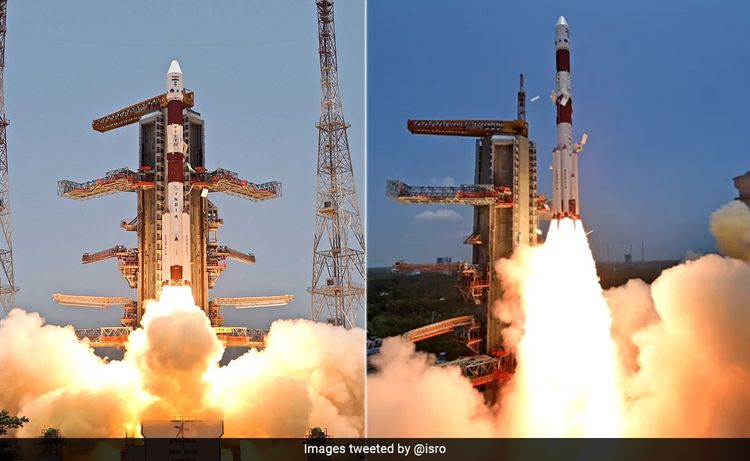Watch: The Moment Aditya L-1 Lifted Off For Its Voyage To Study Sun

Just a short 10 seconds after the engine started, ISRO declared a "splendidly smooth takeoff".
Today at exactly 11:50 am, India's inaugural solar venture, Aditya-L1, triumphantly departed from the Satish Dhawan Space Centre situated in the Sriharikota region of Andhra Pradesh.
As India's inaugural solar mission began its final countdown at ISRO's space center, the entire nation anxiously observed their country join a prestigious group of influential space nations.
Just 10 seconds after the engine started, ISRO declared a "splendidly successful takeoff" of the PSLV rocket carrying Aditya-l1.
The scientists at ISRO were unable to contain their immense happiness and enthusiasm when the initial phase of the launch was proclaimed triumphant after the rocket produced a standard thrust and followed the correct path. "The thunderous noise and the tremors experienced at the space center are truly awe-inspiring," exclaimed one of the ISRO scientists.
After a mere one hundred seconds of liftoff, the initial phase of the launch was confirmed to be going smoothly as the ground-lid strap-on detached. Shortly thereafter, the air-lit strap-on was effectively separated as well, leaving the PSLV rocket to soar towards its destination in outer space, under the watchful eyes of the scientists.
Approximately 63 minutes following liftoff, the Aditya-L1 spacecraft achieved a smooth detachment from PSLV and was inserted into an elliptical pathway encircling the planet. The head of the Indian Space Research Organisation (ISRO), S Somanath, officially proclaimed the launch as a triumphant achievement.
In the most recent update from ISRO, they have stated that Aditya-L1 is now producing electricity and its solar panels have been unfolded. The initial firing to elevate its orbit while still on Earth is planned for tomorrow, September 3, at 11:45 am.
Aditya-L1 is scheduled to be positioned into the halo orbit encircling Lagrange point 1 (L1) within the sun-Earth system, situated at a distance of approximately 1.5 million km from our planet. The expedition towards L1 is anticipated to endure a period of 125 days.
Uncovered by mathematician Joseph-Louis Lagrange, Lagrangian points are areas in outer space where the forces of gravity, exerted by two entities, reach equilibrium. This equilibrium enables spacecraft to stay stationary with minimal expenditure of fuel.
The L1 point is regarded as the most important among the Lagrangian points when it comes to observing the sun.
As per ISRO, the primary aims of the mission involve comprehending the warming of the coronal region and the acceleration of solar wind. It also aims to fathom the beginning of Coronal Mass Ejection (CME), flares, and weather conditions in space near our planet. Another objective is to acquire insights into the interconnection and movement of the sun's atmosphere, along with delving further into the dispersion of solar wind and the irregularity of temperature in various directions.





